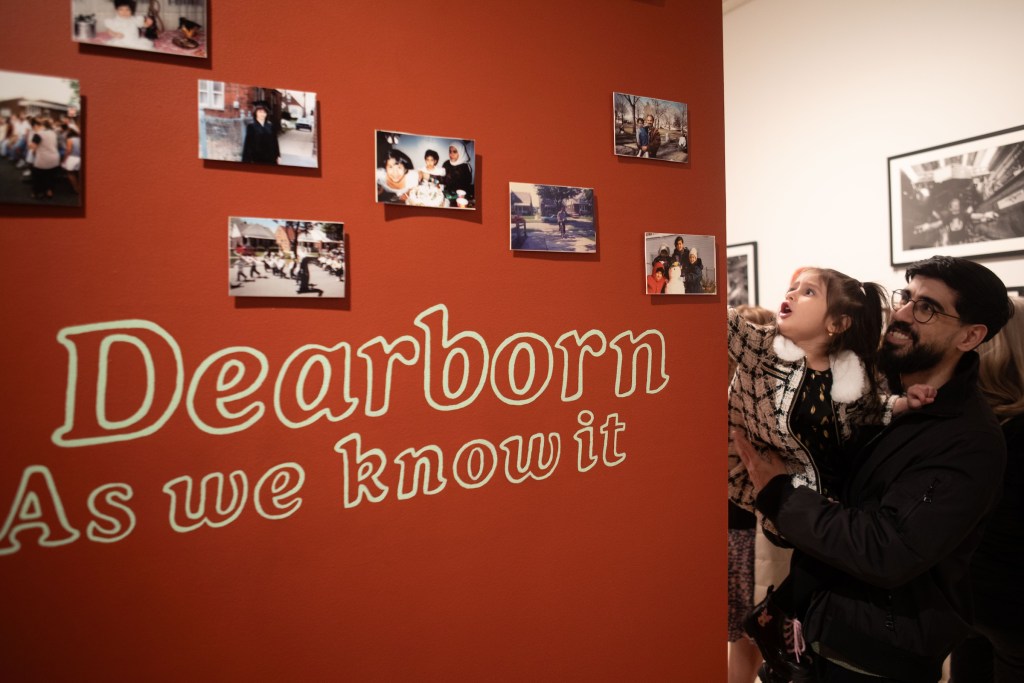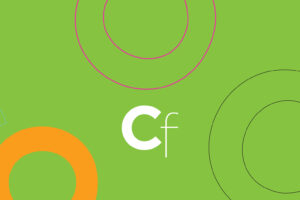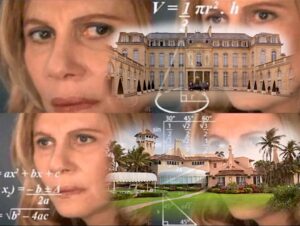The Arab American National Museum Tells a Story of Diversity


America’s Cultural Treasures: This article is part of a series sponsored by the Ford Foundation highlighting the work of museums and organizations that have made a significant impact on the cultural landscape of the United States.
I think what [the Arab American National Museum] does best is to create this safe space for artists, scholars, community members to come together to discuss, share, communicate and create together a narrative that we can all feel connected to.
Haitham Eid, Advisory board member, the Arab American National Museum
One version of the story of the world is that the East and West are intrinsically contrary, even opposed. Dissimilarities between the two hemispheres fuel the notion that people born in the land bridge between Europe, Asia and Africa, whose primary language is Arabic, are somehow fundamentally different from other immigrants to the United States. But just a glance at our history shows that fundamental features of Western Christendom originated in the Arab world. The first hospital was founded in 872 CE in Cairo, Egypt; Fatima Al-Fihri (800–880 CE) built the world’s first university, the University of al-Qarawiyyin (or Karueein) in 859 CE in Fez (now Morocco); perhaps the West’s most popular drink, coffee, was first brewed in Yemen around the 9th century. Christianity, the West’s most populous religion, which some scholars use to contrast it with the East, emerged in the Levant in the 1st century CE, while Islam emerged later in Arabia in the 7th century CE. This is to say that elements of Arab culture have long been part of the structures and institutions of the US, and Arab Americans have long been key figures in America’s stories.
Take, for example, the narrative told by Ron Amen, one of the oral histories offered in the Arab Americans and the Automobile — Voices from the Factory Collection, available through the Arab American National Museum’s (AANM) online collections site. Amen describes his father: “My father was born in a little town in Indiana, Michigan City, and then returned to Lebanon when he was about ten years old with his family, and didn’t come back to the United States until he was in his early twenties.”
Amen goes on to say that like many other immigrants to the United States, what motivated him was better economic opportunities. “He moved here to the Detroit area, where some other relatives from the village had settled here, right here in Dearborn. They were working at the Ford Motor, the Rouge plant,” he continues. “So he got into contact with them. They told him to come here, his chances would be better.”
Amen recalls that his father, like the next-door neighbors who were Russian, Serbian, and Spanish, was able to read or write very little English. Nevertheless, he procured a job at the Rouge as a laborer and retired after 42 years. He says that among Arab Americans, most were working in the factories. “The majority of them were working at the Rouge. That was the draw. That’s why Arabs settled in the south end of Dearborn: the Rouge complex.”

Amen’s story is one of many stories collected by the museum, and in total, they all reveal several important themes that the museum aims to preserve and share. One is that Arab Americans have collectively poured their life energy into this culture, in Amen’s example, to develop one of the most enduring symbols of the nation: the automobile. Another key revelation is that Arab-American identity is a complicated mix of influences from quite different parts of the Arab world, the history of American industry, education, and labor, and strategies of assimilation. What has, in some cases, stymied the acceptance of Arab Americans as part of the larger American narrative is a kind of vestigial attitude of colonialism.
The pioneering Palestinian-American philosopher, academic, and political activist Edward Said, one of the founders of the discipline of postcolonial studies, posited “Orientalism” as a concept propagated in the 18th century to justify European colonial expansion. In his influential book Orientalism (1978), he argued that the idea of the “Orient,” initially conceived by the French and English, was adopted in the 20th century by the United States. At the root of Said’s theory is the conviction that Orientalists regard those who inhabit Southwest Asia and North Africa (SWANA), or what is more commonly referred to as the “Middle East,” as fanatic, violent, and uninterested in rational discourse. This perception has served as an implicit justification for endeavors such as the US invasion of Afghanistan in 2001 and Iraq in 2003.
Traces of Orientalism have persisted in the US in the erasure or exclusion of Arab Americans from the American story. In his 2002 essay “Thoughts About America,” Said plainly states how discriminatory attitudes toward Arabs after 9/11 have had damaging effects on their lives:
“I don’t know a single Arab or Muslim American who does not now feel that he or sh belongs to the enemy camp, and that being in the United States at this moment provides us with an especially unpleasant experience of alienation and widespread, quite specifically targeted hostility. For despite the occasional official statements saying that Islam and Muslims and Arabs are not enemies of the United States, everything else about the current situation argues the exact opposite. Hundreds of young Arab and Muslim men have been picked up for questioning and, in far too many cases, detained by the police or the FBI. And of course, the media have run far too many “experts” and “commentators” on terrorism, Islam, and the Arabs whose endlessly repetitious and reductive line is so hostile and so misrepresents our history, society and culture that the media itself has become little more than an arm of the war on terrorism in Afghanistan and elsewhere.”
What makes the situation that Said describes even more galling is that historical records indicate that the first Arabic speaker to arrive in North America was brought here in 1528 — long before the English pilgrims arrived.
According to the Arab American National Museum’s (AANM) publication Arab Americans: History, Culture and Contributors, this man was named Zammouri. According to other sources, “Mustafa Zemmouri,” “Esteban the Moor,” or “Estevanico” was brought here as a member of the Panfilo de Narvaez Spanish expedition, which arrived near present-day Tampa Bay, Florida, seeking fruitful land and riches. So Arab people are not new to the United States of America. In fact, they have lived in North America for centuries.

“Almost all the Arab communities in the US are quite old,” says Matthew Stiffler, the AANM’s former research and content manager. “My community in Western Pennsylvania had been there since the 1890s. My great-grandparents came from Lebanon in 1900, and there [are] people from Syria, Iraq, Egypt, Lebanon, Palestine that’ve been in the US for over a century, and not just a handful of people, large numbers.”
The Migration Policy Institute indicates that the “first significant modern immigration” occurred from 1800 to 1924 when about 50,000 to 200,000 Christians from Palestine, Lebanon, and Syria (which then were part of the Ottoman Empire) immigrated to the United States seeking religious freedom and economic opportunities.
There were subsequent immigration waves as well. In the mid-20th century, a primarily Muslim population arrived from nations including Egypt, Syria, Iraq, Jordan, and Palestine to “pursue higher education, find valuable work that fit their expertise, and escape political turmoil,” as described by Arab America, a Washington, DC, foundation that promotes the Arab heritage and seeks to empower Arab Americans. AANM indicates on its website that a fourth wave took place in the 1990s due to “Economic difficulties, unemployment and population pressures,” leading “Egyptians, Moroccans and Jordanians to immigrate at the turn of the century and specifically following the Arab Spring revolutions that began in 2010.”
Immigration flows from Arab nations have risen and ebbed over time in line with legislation enacted by the US government. The Hart-Celler Immigration Act, signed into law in 1965 by President Lyndon Johnson, abolished the quota system that had been in place and prioritized family reunification by allowing immigrants who had naturalized to sponsor relatives in a migratory process termed “chain migration.” The Arab Community Center for Economic and Social Services (ACCESS), the organization that would birth the Arab American National Museum, was created within six years of that legislation becoming law, when a group of volunteers started ACCESS out of a storefront in Dearborn’s South End neighborhood.

Maha Freij, now the president and chief executive officer of ACCESS, was in 2002 the organization’s chief financial officer. She describes the mission of ACCESS this way: “We are here to provide solutions to problem areas that face Arab Americans. And at the same time, it was also for our own community and our kids to have a taste of that heritage their parents [brought] with them and appreciate it and learn it.”
The staff and leadership at ACCESS understood that culture was a means to serve the whole person and connect to adjacent communities, so in the 1980s they created a Cultural Arts Program. “The cultural arts allowed us to interact with other communities of color through the arts, which was very important to us, because we saw that it will work better if we find like-minded people who deal with the same problems,” Freij says. For her, a museum was the logical next step after the program’s initial success: “We wanted to upgrade the cultural arts, institutionalize it into something more solid than just a program at ACCESS.”
With Freij directing the project, the Arab American Heritage Campaign, ACCESS set about raising money for a museum. But the key question facing them was what its focus would be. “There was a push that this museum should be about Arabs, about the Arab world and Muslims, because of the intersectionality between the two,” she explains. “Then, 2001 September 11 happened while we were in the middle of that, and the whole goal became much bigger.” Freij further explains, “September 11 had a profound impact on our community and the role we need to play by making sure we build an institution capable of telling our story the way we want to tell it, not the way everybody else was talking about us, as terrorists.”


After two years spent consulting with national focus groups, the leadership decided that the museum needed to concentrate on, in Freij’s words, “telling the story of Arab Americans.” The museum opened its doors in 2005. AANM Director Diana Abouali underscores Freij’s sentiments, saying, “We really need this museum to represent Arab Americans in their own voices and their own words and counter a lot of misconceptions and stereotypes floating around.”
The aim of representing Arab Americans is bound to be complex because Arab identity is itself complex.
The term “Arab” historically designates the 22 member states that compose the League of Arab Nations, which was formed in Cairo in March of 1945. They are located in Southwest Asia and North Africa (SWANA), more commonly known in the US as the “Middle East.” This term originated as a Eurocentric and Orientalist name, coined by the British, and thus is essentially an imperialist invention. Therefore some prefer the terms SWANA or Middle Eastern and North African (MENA).
Andrea Assaf, the executive and artistic director of Art2Action, based in Tampa, Florida, and a longtime collaborator with AANM, describes the situation, “It’s a big conversation in our community. On one hand, a lot are moving to SWANA. SWANA is also problematic because it means Southwest Asia and North Africa but leaves out Central Asia. It leaves out diasporic communities all over the world.” She adds, “We spent two years serving the field getting people to give input and vote on the name for the alliance, and that’s what came out: MENA Theater Makers Alliance. And then a year later everybody’s like we don’t want to use MENA anymore. We want to use SWANA. It’s like … none of the words are right.”
What is crucially important is that Arab Americans name themselves, and have these appellations recognized by those outside the community. For decades ACCESS had been working to customize the official classification of people from the region replacing “White” with MENA on the United States census, so that the Arab community is more visible to government agencies. The National Network for Arab American Communities (NNAAC), an arm of ACCESS, partnered with over 100 civil rights and civic organizations — including the American Civil Liberties Union, Asian Americans Advancing Justice, Black Alliance for Just Immigration, and Mi Familia Vota — to ask the Office of Management and Budget (OMB) to revise standards for federal data on race and ethnicity and add MENA as an ethnic category. When the OMB published a Federal Register notice calling for public comments in 2023, the NNAAC marshaled Arab Americans across the country to participate, collecting more than 13,000 comments in support of a MENA classification. The League of Women Voters reports that in March of this year the OMB announced that new federal standards would now include MENA, and in the 2030 Census, Arab Americans will finally be able to select a category that represents their heritage.
Having a category certainly doesn’t diminish the complexity of Arab-American identity. Outside of the MENA, in the diaspora, identity becomes even more intricate. Elizabeth Barrett Sullivan, the museum’s curator of exhibits, says, “We’re constantly debating who Arab Americans are.” She adds, “Some people want to be identified with their nation-state or religion, and we, as a museum, have to be adaptable to that and let the person tell their own story and have their voice heard in the way that they want it to be.”


The oral histories collected by the museum give some sense of the breadth and depth of this variety. Among the collections available for public use through their Special Collections portal are the aforementioned Arab Americans and the Automobile collection, the Family History Archive of Syrian and Lebanese Families in the American South, which was launched in 2014 in Houston, Texas, and the Oral Histories of the the Faris and Yamna Naff Arab American Collection, which focuses on early Arab immigrant experience in the United States from about 1880 through World War II. Within the archive of Syrian families who live in the American South is the story of Amanda Ekery, a jazz musician from El Paso, Texas, whose father came to the US from Syria and whose mother is Mexican. She describes her cultural experience, being a child of intermarriage, as both curious and ordinary: “We were who we were. We eat tamales at Thanksgiving and then we go and eat Kibbe … at the other half of Thanksgiving.”
As she got older she learned to appreciate her intertwined heritages. “There’s so many different types of Mexicans and there’s different types of Arabs,” she says. “I am both, and researching a lot of it and knowing that there is such a strong history of Hispanic Arabs [and] the commonalities between them that it’s also like, ‘Oh, there are more people like me.’”
“What does it mean to be an Arab American? That’s a big question we try to answer all the time with the programs that we offer. What does it look like? Is it one thing? Are we ticking boxes or is it a multitude of things, and what are those things and those intersections?” asks Rewa Zeinati, a curator of public programming at AANM and the founder and editor of the online literary magazine Sukoon. In recent years, Zeinati attests, the museum has turned more toward the local community, using many types of artistic expression to produce answers.

To cultivate local writers, AANM annually holds a five-month Writing Fellows program that accepts up to 10 Dearborn and Detroit-area high school students interested in writing poetry, fictions, scripts, and graphic novels. In addition, the museum also publicly recognizes literary achievements — it has hosted the annual Arab American Book Awards every year since 2007.
Through its Artists + Residents program, the museum supports emerging artists, with housing, a stipend, and research opportunities and facilities. “Since 2020,” Abouali states, “we’ve hosted roughly eight artist residencies per year. …This program is not exclusively for Arab-American artists; it’s open to any artist whose work and practice aligns with the museum’s mission, which is to be a ‘touchstone that connects communities to Arab American culture and experiences.’”
The entire community is welcome to their Al-Hadiqa (the Garden) project, a shared community garden housed in the building that contains the museum, cocreated with a local garden collective. During a day designated for a seed exchange program, museum staff have asked community members to bring their own seeds so that they could trade them with each other, find new varieties, and then staff could gather some to grow in the garden as well. The space facilitates the exchange of knowledge on plants and the seeds that can be used to generate more green life in Dearborn and more conduits for preserving residents’ cultural memories. Fatima Al-Rasool, the public programming coordinator, recognizes how much the garden is a collective effort. She says “The community was there right at our sides painting the walls, painting the fences, planting the seeds.” She continues, “That project I’m really proud of because it speaks to how we work with the community to make a space for them.”
This effort to create a holistic story that connects the rich diversity of Arab American people and experience can be seen in the museum’s layout. A large courtyard space on the ground floor is decorated with tile mosaics that recall Byzantine motifs of the Eastern Mediterranean. The pointed arches of the doorways and windows reflect Islamic architecture. In the middle of the space is an architectural element that was once a fountain. Like many public spaces in the MENA region, the fountain is a civic space, a place to take refreshments and discuss the issues of the day. On the outskirts of the courtyard are vitrines with glass panels holding various objects. One contains musical instruments such as the oud, ney, tablah, and ganun that can be heard in concert at the push of a button.

On the floors above are the permanent displays, “Coming to America,” “Living in America,” and “Making an Impact.” AANM has a collection of approximately 8,000 objects. As Kelly Bennett, a former public programming coordinator for AANM, says, “95% of the artifacts in this museum were donated by folks from the [local] Arab community.” Exhibits with still photography and captions detail a history of Arab migration to the US, breaking down the population into national and religious affiliations. Exhibits also include suitcases, satchels and trunks, a pair of elaborately beaded shoes from Syria, and an entire kitchen replete with a refrigerator that holds food staples such as eggs, butter, and rose water that are often found in Arab-American households. The “Making an Impact” section includes photographs and extended biographies of illustrious and accomplished Arab Americans, such as the teacher and astronaut Christa McAuliffe; the writer and poet Kahlil Gibran; lawyer and political activist Ralph Nader; and novelist and poet Naomi Shihab Nye. What comes through in this display are the myriad ways that Arab Americans contribute to the nation’s culture.
A former AANM artist-in-residence, Alia Ali, has made an installation in the museum, “al-Falaq,” that palpably carries forward a mission to make a place for those who don’t yet have a place to be. The multimedia piece spans 95 feet across two floors and resembles an octopus with 81 digital screens placed at irregular intervals along its metal tentacles. Ali describes it as “a spaceship from the future that carries Yemeni artifacts of cultural significance via a constellation of video monitors.” It is ultimately a hopeful piece, even as people continue to be displaced by war in Yemen. In the words of the museum, “At a time where there is seemingly no space for Yemenis to move and settle on Earth, al-Falaq swims through space and radically imagines possibilities of the future through the lens of Yemeni Futurism.”
Leyya Mona Tawil, another former AANM artist-in-residence, describes her experience as an Arab American as, “the smell and sound of the swinging incense, while Father George leads the procession at St. Mary Orthodox Basilica; tracing the tatreez (embroidery) patterns on the pillows, imagining the work and dreams behind the stitches; the feel of picking squash and cucumbers from the garden, prickly but also soft.”
The museum has dedicated itself to conveying these experiences and memories in and through artistic production. Its collection and mission are rooted in the rich, diverse sights, sounds, sensations, and stories of Arab American culture and heritage in this time and place. Among these stories and histories there are even more riches to be found.
This article is licensed under a Creative Commons Attribution 4.0 International license.






